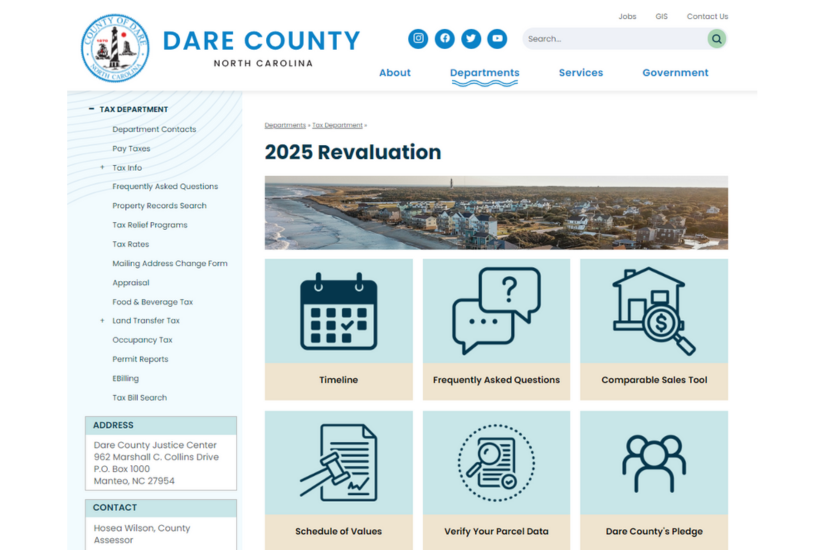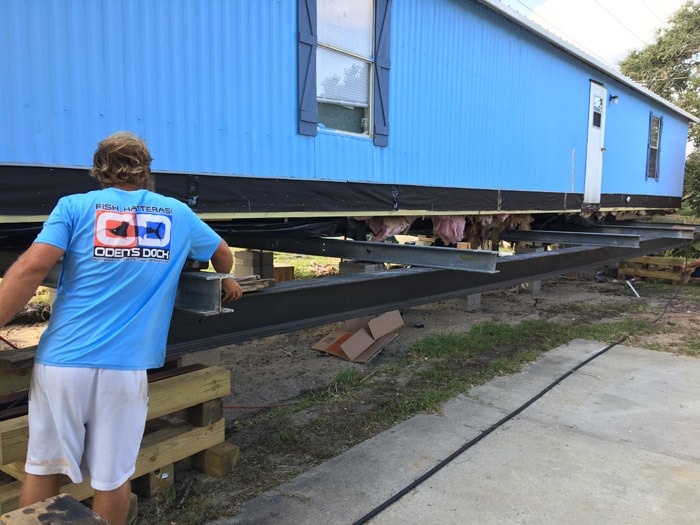Flood insurance rates will spike forsome, but not all, property owners
Drastic increases in flood insurance policy rates are looming for a small percentage of property owners, especially those who own older houses below base flood level or second homes in flood zones.
But most people won’t be facing the astronomical spikes in their insurance bills that some fear.
“Eighty-one percent of the properties are going to be just fine,” said Fletcher Willey, owner of The Willey Agency in Nags Head.
Willey, who has been on a state panel dealing with flood insurance issues for 10 years, said that many of the remaining properties will not be subject to large increases in rates as long as they are adequately elevated, or until they are sold or are damaged substantially.
“So,” he said, “the sky is not falling.”
Enacted in July 2012, the Biggert-Waters Flood Insurance Reform Act (FIRM) is eliminating subsidized payments in phases for commercial properties and those with repetitive losses that are at or below base flood level, until they eventually are paying the full risk rate for flood insurance.
Flood insurance is a required by banks on mortgaged property in flood zones.
As defined by the 2004 act, a property is categorized as a repetitive loss if two or more claims of at $1,000 have been filed within a 10-year period, a severe repetitive loss property would have four or more claims of more than $5,000, or two or three claims that together exceed the value of the property.
Older homes that are on pilings should get an updated elevation certificate to qualify for a better rate, Willey said.
If the law remains as it is now, he said, subsidies will disappear from flood policies after about four years. Until now, about 1 percent of policies have collected as much as 30 percent of the money paid out in claims. And many of those properties have flooded over and over again.
“Should I write a policy for a bad driver who’s going to have an accident every weekend?” Willey asked, comparing the scenario to the 5 percent of flood claims that are repetitive losses.
But Tom Thompson, chairman of NC-20, a group that represents the real estate and construction industries in the state’s 20 coastal counties, warns that except for repeat claims, the increases are inherently unfair and could bankrupt numerous property owners.
“My main concern is to stop Biggert-Waters in its tracks,” he said. “It was conceived in complete ignorance.”
North Carolina, he said, has contributed more in premium payments over the life of the program than the National Flood Insurance Program has paid to claims in the state: $1.2 billion in premiums versus just over $1 billion in claims.
“The question is, then, why are our premiums going up?” he asked.
In January, notice of a 25 percent rate increase was sent to about 305,000 second home owners of pre-FIRM properties, that is, those built prior to 1975 or before the community’s Flood Insurance Rate Maps were drawn. Of them, about 4, 700 are in North Carolina, according to the North Carolina Emergency Management Flood Plain Management Section. Rates are expected to increase an average of 150 percent.
The law considers primary residences those that are lived in at least 80 percent of the time.
In October, notices were sent to owners of about 90,000 commercial properties – 2,143 of them in North Carolina — and to about 11,000 properties – 707 of them in North Carolina – that have suffered repeated flood loss.
And in late 2014, rates will no longer be grandfathered according to what the flood rating, relative to map zone and building elevation had been when the structure was built. Those premiums will be phased in with 20 percent increases over five years, starting with the effective date of the FIRM that identifies the increased risk, until the rate reflects the actuarial rate based on newly updated flood maps. Premiums for the 515,000 properties affected statewide could increase 200 percent, according to the state.
So-called pre-FIRM rates will not be continued on new flood policies, which could result in steep jumps in premiums for new owners and make it much more difficult to sell such property.
There are 10,015 flood insurance policies for unincorporated Dare County, and 414 of them are repetitive loss properties, said Donna Creef, the county’s planning director.
There are 4,501 flood policies in Kill Devil Hills; 3,716 in Nags Head; 1,502 in Kitty Hawk; and 1,300 in Southern Shores. Hyde County has 1,479 and Currituck County has 5,428. As part of the Community Rating System, which evaluates flood mitigation efforts, all qualify for premium discounts.
Jenny Jones, administration and project manager for grants and waterways for Dare County, said that 10 houses for year-round residents in unincorporated Dare were elevated after Hurricane Bonnie in 1998 with FEMA funds as part of the Dare County Hurricane Recovery Project. Since then, 42 more have been elevated, and a new grant has provided funds to elevate 17 more. There is also tentative approval to raise 27 more houses that were damaged in Hurricane Irene in 2011.
All those residences that qualify must be lived in all year, and must be worth saving.
“They fare great, because we get them up as high as we can above base flood,” Jones said. “I don’t know any of the ones we’ve elevated that have ever been flooded again.”
Homeowners with flood insurance coverage may also qualify for a portion of the cost to have their house moved, demolished, or elevated, she said.
As for historic structures that are subject to flooding – like the old Dare County Courthouse in downtown Manteo — the options can be complicated by preservation strictures or difficulty in relocation.
“There is some leeway in the law for historic properties,” said Renee Gledhill-Earley, environmental review coordinator for the N.C. State Historic Preservation Office.
When a building can’t be moved, she said, flood risk could be mitigated with a barrier system to keep the water out. But the risk can’t be ignored.
“It’s a public building,” she said. “And whenever it’s been flooded, it’s been getting public assistance.”
FOR MORE INFORMATION
Click here to see a presentation by the North Carolina Emergency Management Department Floodplain Management Section on the Biggert-Waters Flood Insurance Reform Act of 2012.







